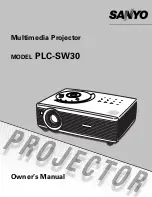
24
6
F
2
S
0
7
8
9
Setting
The following shows the setting elements for the restricted earth fault protection and their setting
ranges.
Element
Range
Step
Default
Remarks
1REF
1ik
0.05
0.50(*)
0.01
0.50
Minimum operating current
1kct1
1.00
50.00
0.01
1.00
1kct2
1.00
50.00
0.01
1.00
CT ratio matching
1kct3
1.00
50.00
0.01
1.00
1p2
50
100%
1%
100%
% slope of DF2
1kp
0.50
2.00(*)
0.01
1.00
DF2 sensitivity
2REF
2ik
0.05
0.50(*)
0.01
0.50
Minimum operating current
2kct1
1.00
50.00
0.01
1.00
2kct2
1.00
50.00
0.01
1.00
CT ratio matching
2kct3
1.00
50.00
0.01
1.00
2p2
50
100%
1%
100%
% slope of DF2
2kp
0.50
2.00(*)
0.01
1.00
DF2 sensitivity
3REF
3ik
0.05
0.50(*)
0.01
0.50
Minimum operating current
3kct1
1.00
50.00
0.01
1.00
3kct2
1.00
50.00
0.01
1.00
CT ratio matching
3kct3
1.00
50.00
0.01
1.00
3p2
50
100%
1%
100%
% slope of DF2
3kp
0.50
2.00(*)
0.01
1.00
DF2 sensitivity
T1REF
0.00
10.00s
0.01s
0.00s
T2REF
0.00
10.00s
0.01s
0.00s
Delayed tripping
T3REF
0.00
10.00s
0.01s
0.00s
Scheme switch
[1REF1] to [1REF5]
[2REF1] to [2REF5]
[3REF1] to [3REF5]
[1REF] to [3REF]
Off/On
Off/On
Off/On
1Io/2Io/3Io
(**)
(**)
(**)
1Io
Enable or disable to output
tripping signal
Number of line currents input to
1REF, 2REF and 3REF elements
(*): Multiplier of secondary rated current
(**): Default settings are dependent on the models. See Appendix H.
Setting of ik (1ik, 2ik and 3ik)
1ik, 2ik and 3ik of minimum operating current settings are set as a ratio to the line CT secondary
rated current. The minimum setting for ik is set to more than the maximum erroneous zero
sequence differential current under normal operating conditions, caused maily by CT errors. A
typical setting would be between 10% and 50%.
Summary of Contents for GRT100 Series
Page 142: ... 141 6 F 2 S 0 7 8 9 Appendix A Block Diagram ...
Page 144: ... 143 6 F 2 S 0 7 8 9 Appendix B Signal List ...
Page 159: ... 158 6 F 2 S 0 7 8 9 ...
Page 160: ... 159 6 F 2 S 0 7 8 9 Appendix C Variable Timer List ...
Page 162: ... 161 6 F 2 S 0 7 8 9 Appendix D Binary Output Default Setting List ...
Page 165: ... 164 6 F 2 S 0 7 8 9 ...
Page 166: ... 165 6 F 2 S 0 7 8 9 Appendix E Details of Relay Menu and LCD and Button Operation ...
Page 174: ... 173 6 F 2 S 0 7 8 9 Appendix F Case Outline Flush Mount Type Rack Mount Type ...
Page 179: ... 178 6 F 2 S 0 7 8 9 ...
Page 180: ... 179 6 F 2 S 0 7 8 9 Appendix G External Connections ...
Page 185: ... 184 6 F 2 S 0 7 8 9 ...
Page 200: ... 199 6 F 2 S 0 7 8 9 ...
Page 201: ... 200 6 F 2 S 0 7 8 9 Appendix J Return Repair Form ...
Page 205: ... 204 6 F 2 S 0 7 8 9 Customer Name Company Name Address Telephone No Facsimile No Signature ...
Page 206: ... 205 6 F 2 S 0 7 8 9 ...
Page 207: ... 206 6 F 2 S 0 7 8 9 Appendix K Technical Data ...
Page 220: ... 219 6 F 2 S 0 7 8 9 ...
Page 221: ... 220 6 F 2 S 0 7 8 9 Appendix M Symbols Used in Scheme Logic ...
Page 224: ... 223 6 F 2 S 0 7 8 9 ...
Page 225: ... 224 6 F 2 S 0 7 8 9 Appendix N Implementation of Thermal Model to IEC60255 8 ...
Page 228: ... 227 6 F 2 S 0 7 8 9 ...
Page 229: ... 228 6 F 2 S 0 7 8 9 Appendix O IEC60870 5 103 Interoperability and Troubleshooting ...
Page 241: ... 240 6 F 2 S 0 7 8 9 Appendix P Modbus Interoperability ...
Page 255: ... 254 6 F 2 S 0 7 8 9 ...
Page 256: ... 255 6 F 2 S 0 7 8 9 Appendix Q Inverse Time Characteristics ...
Page 259: ... 258 6 F 2 S 0 7 8 9 ...
Page 260: ... 259 6 F 2 S 0 7 8 9 Appendix R Failed Module Tracing and Replacement ...
Page 266: ... 265 6 F 2 S 0 7 8 9 Appendix S Ordering ...
Page 269: ... 268 6 F 2 S 0 7 8 9 3 1 Oct 2 2017 Republished under spin off company ...
Page 270: ......
















































